You are here
New Releases
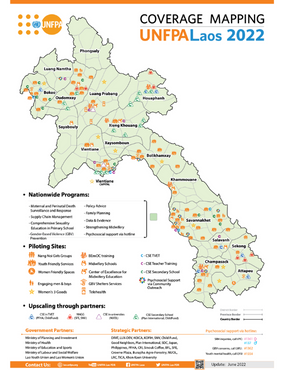
UNFPA Coverage Mapping in Lao PDR - 2023
UNFPA Laos Coverage mapping shows at a glance the programs underway with UNFPA, Lao government and many partners through the map of Lao PDR.
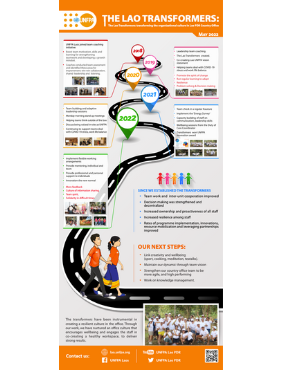
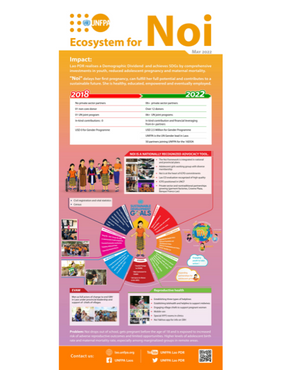
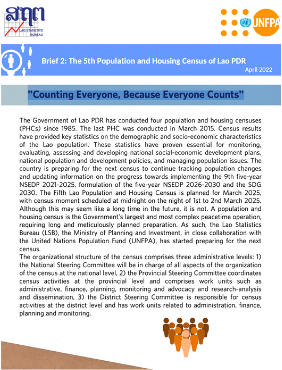
Brief 2: The 5th Population and Housing Census of Lao PDR
The Government of Lao PDR has conducted four population and housing censuses (PHCs) since 1985. The last PHC was conducted in March 2015. Census results have provided key statistics on the demographic and socio-economic characteristics of the Lao population. These statistics have proven essential for monitoring, evaluating, assessing and developing national social-economic development plans, national population and development policies, and managing population issues. The country is preparing for the next census to continue tracking population changes and updating information on the progress towards implementing the 9th five-year NSEDP 2021-2025, formulation of the five-year NSEDP 2026-2030 and the SDG 2030. The Fifth Lao Population and Housing Census is planned for March 2025, with census moment scheduled at midnight on the night of 1st to 2nd March 2025.
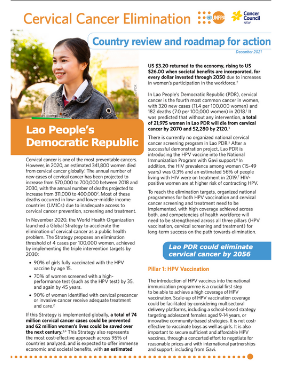
Cervical Cancer Elimination
Cervical cancer is one of the most preventable cancers. However, in 2020, an estimated 341,800 women died from cervical cancer globally.1 The annual number of new cases of cervical cancer has been projected to increase from 570,000 to 700,000 between 2018 and 2030, with the annual number of deaths projected to increase from 311,000 to 400,0002. Most of these deaths occurred in low- and lower-middle income countries (LMICs) due to inadequate access to cervical cancer prevention, screening and treatment.
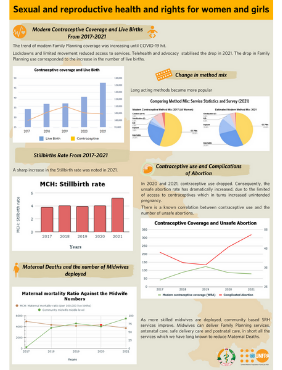
The Impact of COVID-19 on Sexual and Reproductive Health and Rights for Women and Girls
The trend of modern Family Planning coverage was increasing until COVID-19 hit.
Lockdowns and limited movement reduced access to services. Telehealth and advocacy stabilised the drop in 2021. The drop in Family Planning use corresponded to the increase in the number of live births.
In 2020 and 2021, contraceptive use dropped. Consequently, the unsafe abortion rate has dramatically increased, due to the limited of access to contraceptives which in turns increased unintended pregnancy.
There is a known correlation between contraceptive use and the number of unsafe abortions.
As more skilled midwives are deployed, community based SRH services improve. Midwives can deliver Family Planning services, antenatal care, safe delivery care and postnatal care, in short all the services which we have long known to reduce Maternal Deaths.
Telehealth was tested in Luang Prabang to mitigate disruptions of essential SRMNCAH services. Regular, timely follow up of pregnant women by health worker contributed to reduced maternal mortality in the province.
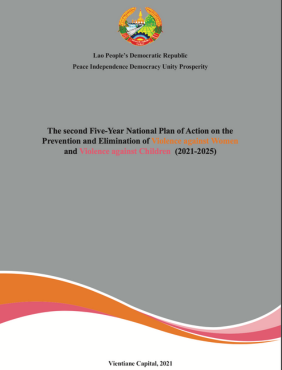
The second Five-Year National Plan of Action on the Prevention and Elimination of Violence against Women and Violence against Children (2021-2025)
The second Five-Year National Plan of Action on the Prevention and Elimination of Violence against Women and Violence against Children (2021-2025)
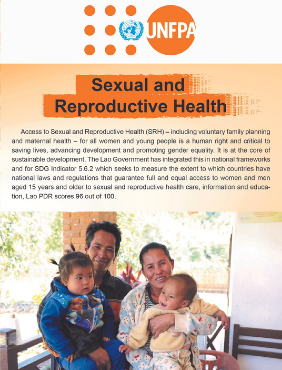
Sexual and Reproductive Health Program Overview
Access to Sexual and Reproductive Health (SRH) – including voluntary family planning and maternal health – for all women and young people is a human right and critical to saving lives, advancing development and promoting gender equality. It is at the core of sustainable development. The Lao Government has integrated this in national frameworks and for SDG Indicator 5.6.2 which seeks to measure the extent to which countries have national laws and regulations that guarantee full and equal access to women and men aged 15 years and older to sexual and reproductive health care, information and education, Lao PDR scores 96 out of 100.
UNFPA’s Sexual and Reproductive Health (SRH) program assists the government to improve quality and use of integrated Sexual and Reproductive Health services, particularly among the most vulnerable groups, including ethnic groups and young people. We support the full implementation of the National Family Planning Action Plan and the Reproductive, Maternal, Newborn, Child and Adolescent Health Strategy to address disparities in accessing Sexual and Reproductive Health and family planning. We support the country to build an effective midwifery programme towards safe motherhood and childbirth. Our interventions are heavy on prevention and where returns on investment are highest for cost effectiveness.
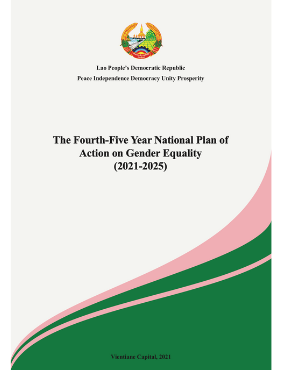
The Fourth-Five Year National Plan of Action on Gender equality (2021-2025)
The Fourth-Five Year National Plan of Action on Gender equality (2021-2025)
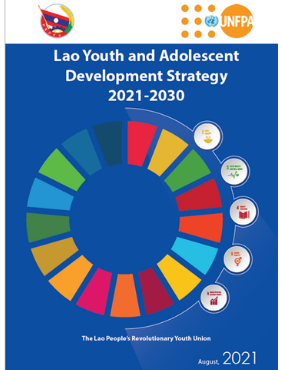
Lao Youth and Adolescent Development Strategy 2021-2030
The Lao Youth and Adolescent Development Strategy has been drafted for the first time in the history of the Lao People’s Democratic Republic (Lao PDR) and is a very important
strategy because the country has a very young population, accounting for a large proportion of the population and representing the main future labor force in all areas of work. This strategy is based on the Law on the Lao Revolutionary Youth Organization, amendment version 2019, the results of a UNFPA-LPRYU joint study “Adolescents and Youth Situation Analysis’’, conducted in 2014, and the 5-year strategic plan of the LPRYU. The discussion to develop the Lao Youth and Adolescent Development Strategy was started in 2016. Lao Youth and Adolescent Development Strategy 2021-2030. It also utilized existing technical documents and information from various sources (secondary data) to identify problems and the needs of adolescents and youth. This was to ensure that the strategy is developed based on the contextual needs. The draft Lao Youth and Adolescent Development Strategy (2021-2030) was then prepared, presented and consulted on through several technical meetings, stakeholder consultations and steering committee meetings.